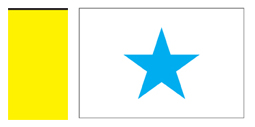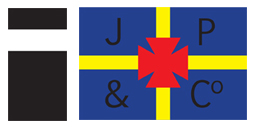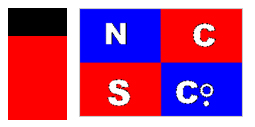HC Sleigh Company Limited
 “Sleighs” founder migrated to Australia from England in 1888. Shipping experience in Melbourne was followed by his ordering two ships to be built in Glasgow in 1898. Involved from 1913 with Golden Fleece (his naming) oil products, he established bulk ocean terminals as part of his widening shipping interests. From the early 1930s these included the trans-Tasman timber trade. H.C.Sleigh Ltd became a public company in 1947.
“Sleighs” founder migrated to Australia from England in 1888. Shipping experience in Melbourne was followed by his ordering two ships to be built in Glasgow in 1898. Involved from 1913 with Golden Fleece (his naming) oil products, he established bulk ocean terminals as part of his widening shipping interests. From the early 1930s these included the trans-Tasman timber trade. H.C.Sleigh Ltd became a public company in 1947.
The Second World War’s commencement saw Sleighs with two ships:
Ship |
Built |
Gross Tons |
In Service |
| James Cook | 1921 | 2181 | 1934-1953 |
| Matthew Flinders | 1938 | 2290 | 1938-1956 |
No reports of requisition, war damage or loss are known.
Read moreDate posted: 2014-04-02 | Comments(0)
James Patrick & Company Limited
 “James Patrick” owes its origin to a master mariner of that name who, arriving in Australia in 1900, built up a coastal trading fleet through the 1920s and 1930s.
“James Patrick” owes its origin to a master mariner of that name who, arriving in Australia in 1900, built up a coastal trading fleet through the 1920s and 1930s.
As the Second World War started, the company had four ships, one of which was replaced promptly in 1940-1941:
Ship |
Built |
Gross Tons |
In Service |
| Corrimal | 1919 | 1140 | 1919-1943 |
| Cardross | 1919 | 1876 | 1935-1940 |
| Carlisle | 1919 | 1912 | 1935-1956 |
| Caradale | 1921 | 1914 | 1937-1958 |
Cardross (III) (b.1919 gt.2515 svce.1941-1954) was the replacement mentioned earlier.
Caradale survived a torpedo strike on 12 May1943 off the New South Wales coast, the torpedo failing to explode. (James Patrick’s fleet was augmented in 1946 by the Culcairn, formerly the Anshun which had been bombed and sunk alongside the Milne Bay wharf during the war years.)
Read moreDate posted: 2014-04-02 | Comments(0)
James Paterson & Company
 This Melbourne-based company was founded by James Paterson, who arrived in Melbourne in 1852, first went to try his luck in the goldfields, -then the following year returned to Melbourne to start trading activity, particularly in coal. The business progressed through ownership of sailing ships to iron steamers as it built its involvement in the coal trade, significantly emanating from Newcastle, New South Wales. In 1961, the Company became part of the McIlwraith McEacharn organization.
This Melbourne-based company was founded by James Paterson, who arrived in Melbourne in 1852, first went to try his luck in the goldfields, -then the following year returned to Melbourne to start trading activity, particularly in coal. The business progressed through ownership of sailing ships to iron steamers as it built its involvement in the coal trade, significantly emanating from Newcastle, New South Wales. In 1961, the Company became part of the McIlwraith McEacharn organization.
At the start of the Second World War, it had two ships:
Ship |
Built |
Gross Tons |
In Service |
| Wear | 1911 | 1892 | 1911-1944 |
| Dumosa | 1920 | 3351 | 1930-1951 |
Although neither vessel was requisitioned or suffered from enemy action, Wear was lost after the ship Anatina collided with it off the southern coast of New South Wales on 8 September 1944.
Read moreDate posted: 2014-04-02 | Comments(0)
North Coast Steam Navigation Company Limited
 Dating from 1891, the “North Coast Company” had its origins as the Grafton Steam Navigation Co. which was the product of New South Wales northern rivers’ shippers unifying in 1857.
Dating from 1891, the “North Coast Company” had its origins as the Grafton Steam Navigation Co. which was the product of New South Wales northern rivers’ shippers unifying in 1857.
The company entered the Second World War with seventeen ships, a new-build joining in 1942:
Ship |
Built |
Gross Tons |
In Service |
| Orara | 1907 | 1297 | 1907-1946 |
| Coolebar | 1911 | 479 | 1911-29, 1938-48 |
| Gunbar | 1912 | 482 | 1912-26, ?-1946 |
| Pulganbar | 1912 | 1160 | 1912-1948 |
| Doepel | 1919 | 389 | ?-1947 |
| Wollongbar | 1922 | 2239 | 1922-1943 |
| Ulmarra | 1923 | 924 | 1923-1955 |
| Uki | 1923 | 545 | 1923-1954 |
| Bonalbo | 1925 | 960 | 1925-1954 |
| Arakoon | 1926 | 875 | 1926-1962 |
| Nimbin | 1928 | 1052 | 1928-1940 |
| Melinga | 1928 | 536 | 1928-1954 |
| Wyrallah | 1934 | 1049 | 1934-1954 |
| Comara | 1937 | 751 | 1937-1954 |
| Nambucca | 1937 | 489 | 1937-1945 |
| Wyangerie | 1938 | 1068 | 1938-1954 |
| Bangalow | 1939 | 648 | 1939-1954 |
Uralba (gt 602) completed building in1942 and was immediately requisitioned by the Royal Australian Navy, with later peacetime service to 1947.
By the end of 1939 Orara, Uki and Coolebar had been requisitioned by the Royal Australian Navy as minesweepers, while on 10 January 1940 Nambucca joined them (serving as part of the 50th Minesweeping Group but later to be lost by fire in 1945 during requisition by the United States Army Small Ships Section). Orara, a flotilla leader, recovered survivors of the Cambridge, sunk by mine off South East Point at 11 a.m. on 7 November 1940. During November 1940 Uki recovered an enemy mine off Montague Island on the New South Wales south coast. Gunbar became a minesweeper late in 1940 and in September Wyrallah a commissioned fleet auxiliary, renamed in 1942 as HMAS “Wilcannia” then serving as a patrol vessel. Wyrallah had participated in the search for survivors of the HMAS “Sydney” sinking in November 1941. Nimbin became a mine casualty off Norah Head, New South Wales on 5 December 1940, with seven lives lost including the Master, its thirteen survivors recovered by Orara, with Bonalbo standing by.
United States Army Small Ships Section took over Bangalow (for survey/lighthouse/cable repair duties) and Melinga early in 1942, and Comara later that year, as supply vessels, with Nambucca joining them in this role on release from minesweeping. Wollongbar became the company’s second loss to enemy action, torpedoed off Crescent Head, New South Wales in April 1943, with thirty-two crew lost, five survivors.
Wyangerie entered Sydney Harbour on one voyage at 8.53 p.m. 31 May 1942, less than one hour after the three Japanese midget submarines I.22, I.24 and I.27. Pulganbar served as a stores ship from 1939 to 1946.
Read moreDate posted: 2014-04-01 | Comments(0)
Newcastle & Hunter River Steamship Company Limited
 The product of a merger of earlier separate interests, some going as far back as 1852, the “Newcastle company” commenced its intra-state operations in January 1892.
The product of a merger of earlier separate interests, some going as far back as 1852, the “Newcastle company” commenced its intra-state operations in January 1892.
They had two ships at the start of the Second World War:
Ship |
Built |
Gross Tons |
In Service |
| Kindur | 1928 | 1267 | 1928-1956 |
| Mulunbinda | 1937 | 1262 | 1937-1963 |
These were joined by Karuah (b.1940.gt.1342. 1940-1961). Records suggest they suffered no war damage. Mulubinda and Karuah served under Royal Australian Navy requisition.
Read moreDate posted: 2014-04-01 | Comments(0)